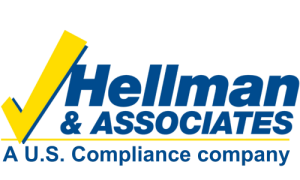Risk Factors Leading To Heat Stress
- Four environmental factors affect the amount of stress a worker faces in a hot work area:
- Temperature;
- Humidity;
- Radiant heat (such as from the sun or a furnace); and
- Air velocity.
- Perhaps most important to the level of heat stress an individual is at risk of are personal characteristics such as age, weight, fitness, medical condition and acclimatization to the heat.
- Physical labor increases blood flow to muscles with less to the skin to help disperse body heat.
- Medication, may affect you when working in hot environments, ask your healthcare provider.
- Heat-induced illness in the past can lead to a higher susceptibility of recurrence.
- Wearing some personal protective equipment (like respirators or chemical resistant coveralls).
Heat Stress Prevention
- Drink plenty of cool water (one small cup every 15-20 minutes).
- Wear light, loose-fitting, breathable (like cotton) clothing.
- Take your breaks away from heat sources or direct sunlight. (Allow your body to cool down).
- Avoid eating large meals before working in hot environments.
- Avoid caffeine and alcoholic beverages (as these make you lose water and increase heat stress risk).
Heat Stroke
Heat stroke occurs when sweating stops and the body can no longer rid itself of excess heat.
- Signs include mental confusion, delirium, and loss of consciousness, convulsions or coma.
- A body temperature of 106 degrees F or higher.
- Hot dry skin which may be red, mottled, or bluish.
While awaiting medical help, the victim must be removed to a cool area and his or her clothing soaked with cool water.
He or she should be fanned vigorously to increase cooling. Prompt first aid can prevent permanent injury to the brain and other vital organs.
Heat Exhaustion
Heat stroke occurs when sweating stops and A worker with heat exhaustion still sweats but experiences extreme weakness or fatigue, giddiness, nausea, or headache. Their skin will be clammy and moist, the complexion pale or flushed, and the body temperature normal or slightly higher. Treatment is usually simple: have worker rest in a cool place and drink an electrolyte solution. body can no longer rid itself of excess heat.
Heat Cramps
Heat cramps, painful spasms of the muscles, are caused when workers drink large quantities of water but fail to replace their bodies’ salt loss. Cramps may be relieved by taking liquids by mouth or saline solutions intravenously for quicker relief.
Heat Rash
Heat rash may occur in hot and humid environments where sweat is not easily removed from the surface of the skin by evaporation. It can be prevented by resting in a cool place and allowing the skin to dry.
